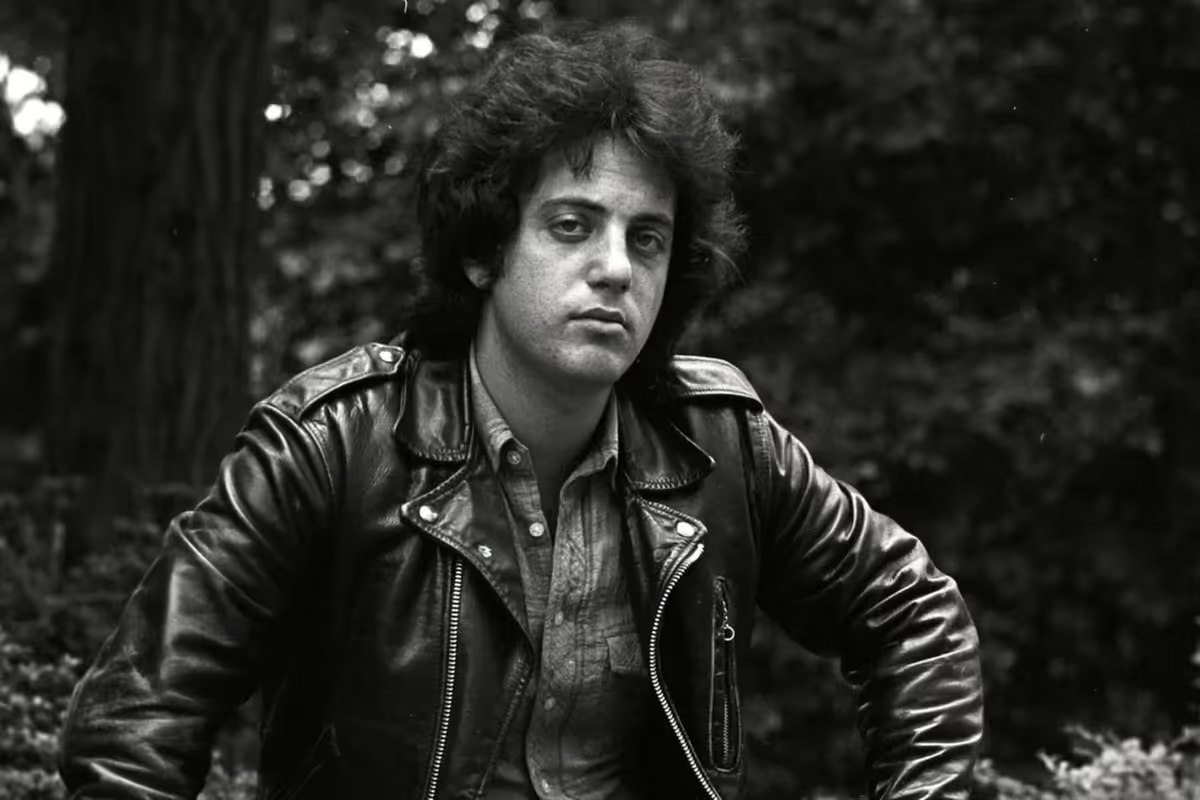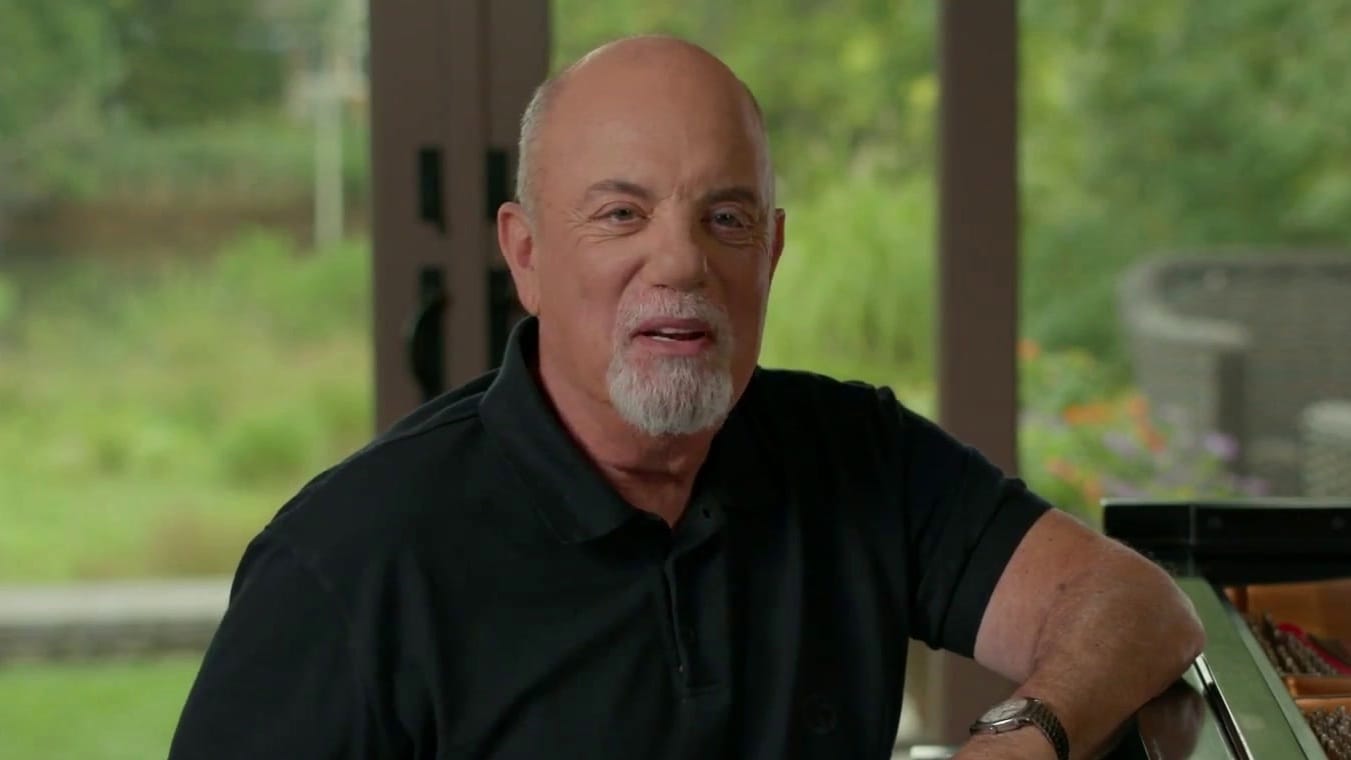Seven Thoughts on 'Billy Joel: And So It Goes'
In which a non-fan burns through all five hours of the new two-part HBO documentary on Billy Joel and comes away enlightened.

A confession up front: I’m not a Billy Joel guy. There was a stretch in my early childhood, when I was borrowing Beatles records from our next-door neighbors and poring through my older sisters’ record collection, that I connected with songs from The Stranger, the 1977 breakthrough that includes many of his most tolerable hits, including “Movin’ Out (Anthony’s Song),” the title track, “Vienna,” and the irresistible soft-rock standards “Just the Way You Are” and “She’s Always a Woman.” (I’m sorry but I can’t get there with “Scenes from an Italian Restaurant,” which is the prototype of the grandiose Joel epic that sets my teeth on edge.) But coming of age in the MTV ’80s meant contending with the singles from Joel’s An Innocent Man, a series of upbeat throwbacks to the ‘50s and ‘60s pop/rock music that had inspired him when he was a child. That meant Joel strutting and hamming his way through videos to “Tell Her About It,” “Uptown Girl,” and “The Longest Time,” and a pre-adolescent me getting an early lesson in how earworms can feel like tapeworms. It wouldn’t be long before I retreated permanently to college radio, courtesy of a much-cooler-than-me eighth grade girlfriend who was into The Cure and Album 88, Georgia State’s legendarily good station.
And yet, when I was asked to consider Billy Joel: And So It Goes, a new two-part, career-spanning documentary, for my New York Times list “The 50 Best Movies on HBO Max Right Now,” I gobbled up all five hours as eagerly as I did Pavements, the excellent Alex Ross Perry doc about a band I actually like. (Keith’s review on that film for us is here. Mine is up on the Los Angeles Times.) Whatever you think of his music, Joel himself is a fascinating figure, a poor Jewish kid from Hicksville, Long Island whose piano brought him fame and fortune, but could never deliver him from the feelings of abandonment and self-doubt that haunted him his entire career, along with his related struggles with alcoholism. And So It Goes isn’t free from the frustrating clichés of streaming-ready music profiles—more on those in a bit—but Joel could not be more compelling as the emotional ballast that holds these five hours together. Here are seven thoughts on him and the documentary:
And So It Goes is The Last Dance of music bio-docs
A multi-part documentary tribute to a generational star famous for packing basketball arenas? That’s only the most superficial connection between And So It Goes and The Last Dance, the 10-part Michael Jordan documentary that will be remembered as the biggest sporting event of the Covid-19 lockdown era. The Joel doc may be half as long and a less-promising candidate for memes, but the two films share a uniquely contradictory soul: Both are plainly artist-approved monuments to their own greatness, anchored by subjects who share an extensive and exhaustive accounting of their careers. And yet both are nonetheless revealing in ways these men can’t control, suggesting an essential loneliness that clings to them like a barnacle. In The Last Dance, you can’t help but notice that Jordan’s closest relationships were not with the other players who helped the Chicago Bulls win six championships, but with people on staff, like his limo driver or his security guards. For his part, Joel had an easier time forging relationships, but between his touring, his drinking, and his erratic behavior, he burned through three marriages before landing on his current one, and had a pattern of alienating his best friends, too. The same ambition that would electrify areas also had the tendency to lead them into the ditch.

Streaming bio-docs have the wrong incentives
The first part of And So It Goes includes one riveting piece of Joel’s early career after another: His teenage years in local Hicksville bands trying to mimic The Beatles; his hardscrabble upbringing with a bipolar mother and a father who abandoned their family for Europe; his close friendship and musical partnership with Jon Small, which led to a comically failed attempt to release a metal album under the name Attila; his affair with Small’s wife Elizabeth, which so throughly obliterated the relationship between all three of them that Joel attempted suicide twice and was briefly institutionalized; his terrible contract with Artie Ripp, who produced his debut record (1971’s Cold Spring Harbor) so incompetently that the vocals were compressed to a speed that made Joel sound like a Chipmunk; and his time playing an L.A. bar under the name “Bill Martin” to make ends meet, a stint that would eventually inspire the anthem “Piano Man.” All great stories, each contributing to a picture of Joel as a restless, passionate talent who was far less assured in the worlds of love and business.
And then we hear from Nas. And Pink. And Garth Brooks. Then later we hear from living legends like Bruce Springsteen and Paul McCartney and Sting. And suddenly, the film pivots away from being a portrait of a flawed but singular talent and becomes a bland monument to his genius, like a standing exhibit at the Rock and Roll Hall of Fame. While And So It Goes is leagues more candid than many other artist-approved films of its kind, like Elton John: Never Too Late or Road Diary: Bruce Springsteen and E Street Band, the same motive to further lionize a legend frequently stalls out a documentary that’s already five hours’ long. Joel doesn’t need flowers from other music legends or B-roll from excited fans at his Madison Square Garden residency to affirm his career. This needn’t be a promotional video. Joel’s impact on American popular music is self-evident.
This post is for paying members only
Sign up now to read the post and get access to the full library of posts for subscribers only.
✦ Sign up